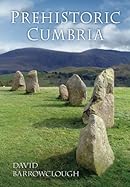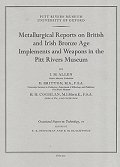<< Our Photo Pages >> The Cochno Stone - Rock Art in Scotland in West Dunbartonshire
Submitted by Andy B on Tuesday, 04 May 2021 Page Views: 18084
Rock ArtSite Name: The Cochno Stone Alternative Name: Whitehill 1Country: Scotland County: West Dunbartonshire Type: Rock Art
Nearest Town: Glasgow Nearest Village: Clydebank
Map Ref: NS50457388
Latitude: 55.934646N Longitude: 4.395598W
Condition:
| 5 | Perfect |
| 4 | Almost Perfect |
| 3 | Reasonable but with some damage |
| 2 | Ruined but still recognisable as an ancient site |
| 1 | Pretty much destroyed, possibly visible as crop marks |
| 0 | No data. |
| -1 | Completely destroyed |
| 5 | Superb |
| 4 | Good |
| 3 | Ordinary |
| 2 | Not Good |
| 1 | Awful |
| 0 | No data. |
| 5 | Can be driven to, probably with disabled access |
| 4 | Short walk on a footpath |
| 3 | Requiring a bit more of a walk |
| 2 | A long walk |
| 1 | In the middle of nowhere, a nightmare to find |
| 0 | No data. |
| 5 | co-ordinates taken by GPS or official recorded co-ordinates |
| 4 | co-ordinates scaled from a detailed map |
| 3 | co-ordinates scaled from a bad map |
| 2 | co-ordinates of the nearest village |
| 1 | co-ordinates of the nearest town |
| 0 | no data |
Internal Links:
External Links:
I have visited· I would like to visit
SumDoood would like to visit
SolarMegalith visited on 16th Sep 2016 - their rating: Cond: 4 Amb: 4 Access: 4
Andy B: would like to visit No 10. in Kenny Brophy's Top Ten Urban Prehistory site selections, compiled for our Old Stones book.
The Cochno Stone (NMRS: NS57SW 32), West Dunbartonshire, is located at the foot of the Kilpatrick Hills on the north-western edge of Glasgow, in an urban park in Faifley, a housing estate on the north side of Clydebank. It is one of up to 17 panels of rock-art in this area but by far the most extensive. The outcrop measures some 13m by 8m, is covered in scores of cup-marks, cup-and-rings marks, spirals and other unusual motifs. The surface is undulating, sloping sharply to the south, and is a ‘gritstone’ or sandstone.
In 1964 it was sealed, buried, put beyond use and rendered inaccessible. By archaeologists. For its own good.
This rock-art splattered outcrop, rich with cups, cup-and-rings marks, spirals and two four-toed footprints was deemed, in the 1960s, to be under threat from the urban expansion of Glasgow. The Council-built estate of Faifley, now in West Dunbartonshire Council, encroached almost to the Cochno Stone itself. Too close apparently...
My excavation is being carried out in collaboration with Spanish heritage company Factum Arte and the film-maker May Miles Thomas (director of the wonderful film The Devil’s Plantation). The plan is to make a super high resolution laser scan of the Stone once the topsoil has been removed, and then recreate an exact replica of the Stone, to sit in situ once the real Stone has been buried again. This is a very exciting project and it was a privilege to be one of the first people to see the Stone since 1964.
Read more at The Urban Prehistorian and follow the Live Tweeting of the dig.
Photo Credit: Kenny Brophy (with many thanks)
Below - Video Talk: Revealing the Cochno Stone - Dr Brophy speaks about last year's excavations
Note: The Cochno Stone and Faifley Rocks! an online talk with the history of the stone and all the latest on the project with Dr Kenny Brophy, available now to watch
You may be viewing yesterday's version of this page. To see the most up to date information please register for a free account.





Do not use the above information on other web sites or publications without permission of the contributor.
Click here to see more info for this site
Nearby sites
Key: Red: member's photo, Blue: 3rd party photo, Yellow: other image, Green: no photo - please go there and take one, Grey: site destroyed
Download sites to:
KML (Google Earth)
GPX (GPS waypoints)
CSV (Garmin/Navman)
CSV (Excel)
To unlock full downloads you need to sign up as a Contributory Member. Otherwise downloads are limited to 50 sites.
Turn off the page maps and other distractions
Nearby sites listing. In the following links * = Image available
114m WNW 283° Auchnacraig Stone Circle* Stone Circle (NS50347391)
133m N 11° Cochno Crags* Natural Stone / Erratic / Other Natural Feature (NS50487401)
285m SW 214° Auchnacraig 1* Rock Art (NS50287365)
305m SSW 210° Auchnacraig 4* Rock Art (NS50297362)
447m SW 229° Auchnacraig 5* Rock Art (NS501736)
698m E 90° Whitehill 3* Rock Art (NS51157386)
853m E 81° Whitehill 4* Rock Art (NS51307398)
939m E 79° Whitehill 5* Rock Art (NS51387403)
1.5km SW 219° Antonine Wall remains below Golden Hill* Stone Fort or Dun (NS49467274)
1.5km SW 215° Golden Hill Roman Fort* Stone Fort or Dun (NS49517265)
2.4km ESE 120° Castlehill Fort (Bearsden)* Hillfort (NS5248272614)
4.2km WSW 244° Kilpatrick Crannog Crannog (NS4658172121)
4.5km NNE 16° Craigenkirn (New Kilpatrick) Cairn (NS5183978157)
4.5km ESE 111° Bearsden Roman Bath-house* Stone Fort or Dun (NS54627208)
5.0km WSW 257° Erskine Bridge Crannog Crannog (NS4548272901)
5.1km WSW 249° Erskine Park* Ancient Village or Settlement (NS45607220)
5.5km ESE 105° Antonine Wall, New Kilpatrick Cemetery* Misc. Earthwork (NS557723)
5.5km NE 52° Echo Stone (Mugdock) Natural Stone / Erratic / Other Natural Feature (NS54937710)
5.7km W 273° Hill of Dun* Hillfort (NS44807439)
6.3km ENE 62° Middleton Row Stone Row / Alignment (NS561766)
6.5km NNE 20° Craigmore Cottage Standing Stones (NS529799)
6.9km NNW 348° The Whangie* Natural Stone / Erratic / Other Natural Feature (NS49238066)
7.0km W 272° Ardconnel Hill Fort* Hillfort (NS4348074400)
7.0km W 274° Greenland 2 Rock Art (NS43487462)
7.0km W 274° Greenland 1 Rock Art (NS43447460)
View more nearby sites and additional images






 We would like to know more about this location. Please feel free to add a brief description and any relevant information in your own language.
We would like to know more about this location. Please feel free to add a brief description and any relevant information in your own language. Wir möchten mehr über diese Stätte erfahren. Bitte zögern Sie nicht, eine kurze Beschreibung und relevante Informationen in Deutsch hinzuzufügen.
Wir möchten mehr über diese Stätte erfahren. Bitte zögern Sie nicht, eine kurze Beschreibung und relevante Informationen in Deutsch hinzuzufügen. Nous aimerions en savoir encore un peu sur les lieux. S'il vous plaît n'hesitez pas à ajouter une courte description et tous les renseignements pertinents dans votre propre langue.
Nous aimerions en savoir encore un peu sur les lieux. S'il vous plaît n'hesitez pas à ajouter une courte description et tous les renseignements pertinents dans votre propre langue. Quisieramos informarnos un poco más de las lugares. No dude en añadir una breve descripción y otros datos relevantes en su propio idioma.
Quisieramos informarnos un poco más de las lugares. No dude en añadir una breve descripción y otros datos relevantes en su propio idioma.